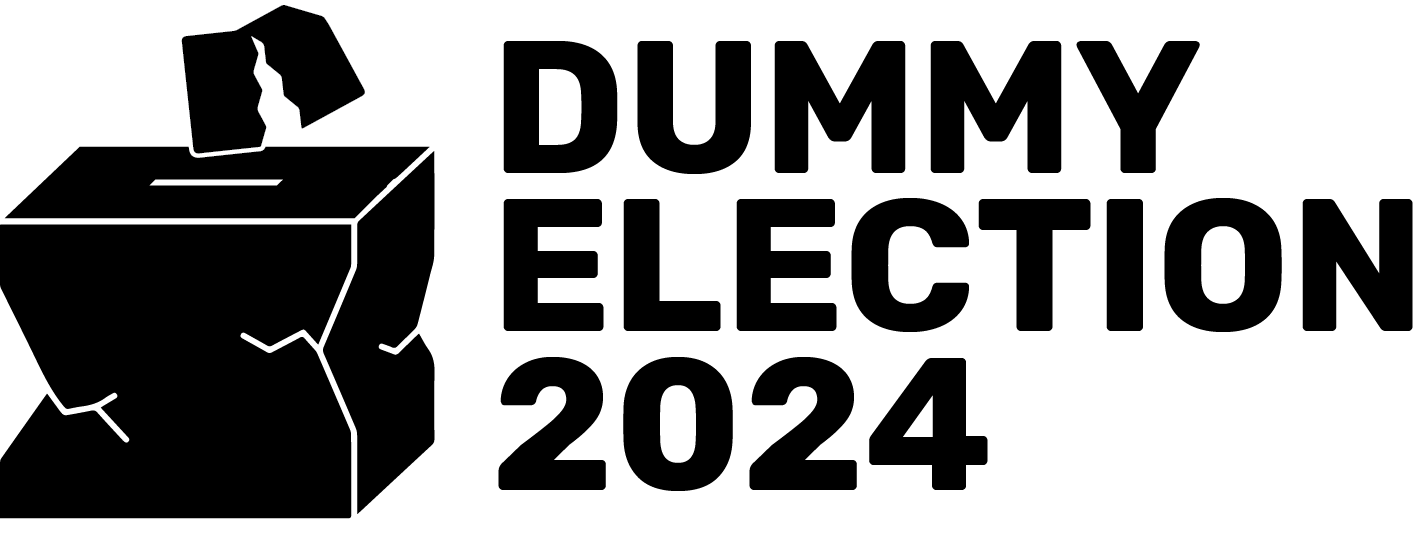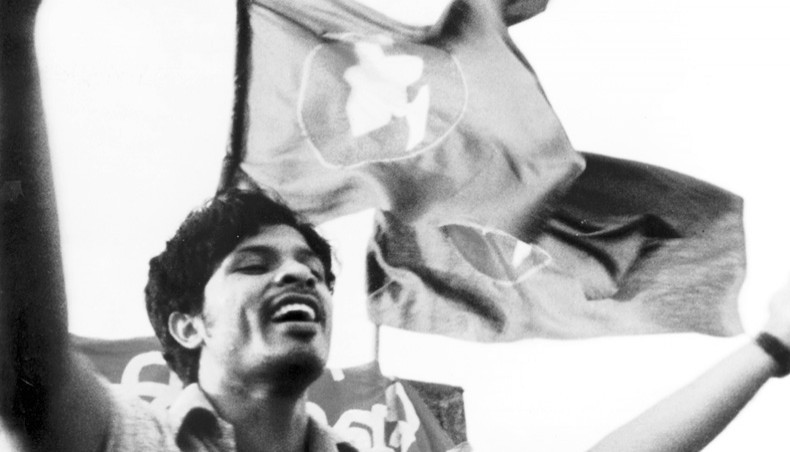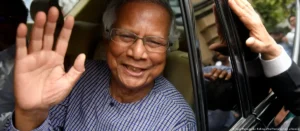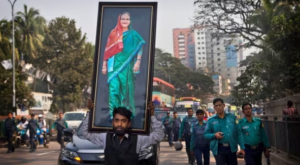Ali Riaz
AS BANGLADESH celebrates the 52nd anniversary of Victory Day, the country is faced with a sense of uncertainty and apprehension about the future. The question that is on everyone’s mind is: where is the country heading? Quo Vadis Bangladesh? With an ongoing political crisis, an imminent one-sided election, unabated violation of fundamental rights, and the everyday struggle of millions to meet basic needs, this December appears somewhat different than others. It is also a déjà vu — we have been here previously.
I recall the day 51 years ago as a 13-year-old child. It was a day of excitement — for being unshackled from the need to hide inside my home for months, watching the adults being fearful all the time and listening to the clandestine radio station at the lowest audible volume. The moment of victory came suddenly and after a long wait, at once. Cheerful and exuberant, we went to the street in front of the home on Siddheswari Road, not knowing that the retreating Pakistani soldiers would soon march through the road to the Racecourse to surrender. As they marched, they were intermittently firing into the sky and sometimes at the joyous crowd, leading to the death of a bystander. A few freedom fighters, with their weapons, were with the crowd. In this elated moment, anxiety was not so hidden on the face of our family members and neighbours as we did not know whether all our family members had survived, whether our brothers who became ‘refugees’ were well enough to come back. In the back of our mind was our cousin who disappeared in July on his way to Narayanganj and we were wondering whether he was still alive. We pondered for months, in solitude, that perhaps he has joined a band of freedom fighters although all available indications were that he was killed by the Pakistani soldiers. A sense of joy, relief and victory was mixed with concern for those whose whereabouts were unknown. Little did we know what happened to Dr Fazle Rabbi, who was picked up from near our home the day before by the Pakistani soldiers and a group of armed men; we did not know that others have faced similar predicaments. Looking back, it seems that these moments were somewhat similar in all families and they were the microcosm of the nation. The nation, as a whole, was emerging from the darkness yet did not know what was next. The loss, the pain and the trauma were transcended by hope. In the days that followed, we came to know how big a price the nation paid for freedom. We began to understand the losses that will never be filled for the families and the nation. Yet, in variation, everyone was looking forward to better days to come. The dream was the guide to the future. The sense of belonging, empathy, the mindset to stand together became the beacon.
Then many Decembers passed, hopes of citizens were dashed and the nation found itself mired in division. Life went on. Each December was supposed to provide us with the opportunity to take stock of the progress towards achieving the promises made during the war of independence — of equality, human dignity and social justice. Some of the citizens did ask the question — where are we heading? Rituals superseded introspection. Indeed, there was progress, there were achievements, but there were unkept promises, too. Then came another December, it was 1990. The hope of a new beginning triumphed the past divisions. The struggle to have better governance, of making an inclusive society, upholding fundamental rights earned a victory. The historic Victory Day came nine days after another day of victory, a victory against a military dictator. By 1990, I was away from the country. As a student studying the political economy of martial law in Bangladesh, I could not let the moment pass without being on the ground. Was it the academic interest that brought me home or the urge to see the success of the movement of which I was a part for five years until I left in June 1987? I missed the moments when the regime crumbled, but what was in the air when I arrived at Dhaka in mid-December was the dream of a new beginning. Some newspapers described the moment of downfall of the military regime as the ‘second liberation.’ Hyperbole aside, there was a feeling of the spring amid the winter. The question was not where are we heading but how we do get there? An aspiring nation stood united, knowing that the path may vary; the goal was the same — a democratic country where the rulers are held accountable, institutions serve the citizens rather than a small group of people and the economy is not beholden to a few. Years passed thereafter. The dream faded, acrimony reigned and the constitutional stipulations that ‘all powers in the republic belong to the people’ will be the guide to the governance seem only a statement on a paper.
Fifteen years later Bangladesh plunged into a political crisis. It was December 2006. The nation was more polarised than ever before. In addition to my frequent visits to Dhaka, as I landed at Dhaka airport in late December, the person I first met was someone who offered to help me with my luggage. Although I politely declined, he was keen on talking to me with his eyes glued to the TV screen hanging on the wall. With a big sigh, he asked me, evidently rhetorically, what was next? It was a monologue, perhaps. Was it a winter of discontent or a time when the nation was scrambling to find a way out of a crisis? In my previous visit to Dhaka in summer of that year, it became evident to me that ‘a dark cloud of uncertainty hangs over the upcoming electoral exercise in Bangladesh.’ Importantly, it was obvious that three of the four institutions crucial to the election had already lost credibility — p;residency, the head of the caretaker government, and the Election Commission (particularly, the chief election commissioner). This left the military as the only institution to have a potential role, however unpleasant it was. Unfortunately, in December 2006, the nation was in trepidation. By early January 2007, Bangladesh witnessed a ‘soft coup’ which averted a large-scale bloodshed but put the country’s democratic journey to a halt and consequently accelerated the democratic backsliding.
Two years later in December 2008, the nation went to an election with great expectations that a new course would be charted. A fair share of optimism of returning to the democratic path, trepidation of how the past would shape the future and uncertainty about the transition prevailed in the country. Not all sentiments were shared by everyone at once and the variation depended on political persuasion, yet the majority seemed to be engaged in politics in some measure. The feeling was that we could shape our destiny. Media was free to speak. I recall those days of my Dhaka trip as exciting times because expressing contrarian views was not frowned upon. Despite differences of opinion, an opponent was not considered ‘enemy’. Reaching ‘across the aisle’, a political phrase to underscore working on a common goal with adherents to different beliefs and ideologies, was present in some measure, both in social and political arenas. There was a vibrant civil society despite being fragmented along party lines. This was not an idyllic time; society was not free from schisms; those who were on the bottom of the economic ladder were struggling. But, a latent sense of normalcy marked the time.
Thereafter, Bangladesh saw many summers and many winters. Politics began to take a different turn and came to a head in December 2014. With an election to be boycotted by the opposition, it was a different political landscape. Political polarisation reached a new height. The media were being shackled, the social arena increasingly restricted, and civil society was only a ghost of its past. Bangladesh’s journey towards authoritarianism was in full swing. Violence engulfed the country. The election, if at all, was not meant to be a contestation but a reaffirmation of the incumbent. It appeared that the incumbent was not looking for a mandate to govern but was in search of a way to provide a veneer of legitimacy for its power to rule. A new political settlement had already been in place, which does not include the citizens. Issues such as democracy, national identity and religion were supposed to be discussed and debated, but by December 2014, they became wedge issues. A dense fog of fear had begun to descend even before December, perhaps even before the year began. Fearing such an environment in the making, I published the revised version of my book Bhoyer Sangskriti (The culture of fear) in November, but it became more pronounced in the month of December. What consequences it brought are easily discernible in the pathway of the country’s politics. The natural winter came to an end, but the nation’s journey to a colder season continued. Four years later, in December 2018, with another election it became evident that the last line separating the state, the government and the ruling party had disappeared. The election revealed that a new political settlement emerged where the political elites were junior partners, subordinated by coercive and administrative apparatuses of the state. Political elites are now tasked to applaud the leader as are the business elites.
My journey through many Decembers has brought me here, to 2023. The country is now on the precipice of a longer and deeper crisis. Have we been here before? In some ways, we have been, but this time the cliff is too steep. Looking at the possible future trajectory of the system of governance, understanding the perils of the great game being played in the front yard, inferring the scale of potential economic disaster, this December we ask — where is Bangladesh heading?
This article was first published on New Age, on December 16, 2023






